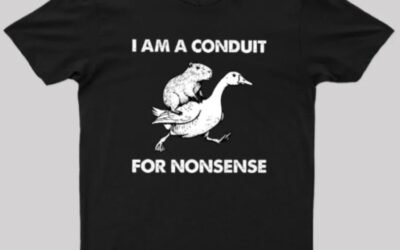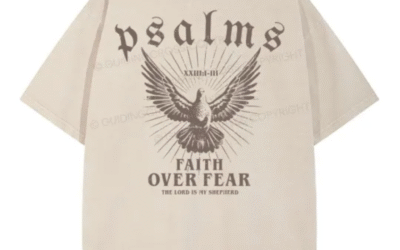Rhyme Without Reason: An Exploration of Whimsy and Expression
 rdtzone
rdtzone
The phrase “rhyme without reason” evokes a sense of whimsy and unpredictability, blending art with spontaneity in a way that captures the imagination. It refers to things that may seem arbitrary or lack a clear logical basis but still carry an intrinsic charm or appeal. This concept has fascinated thinkers, writers, and artists for centuries, influencing literature, speech, and even modern communication.
Understanding “rhyme without reason” requires delving into its origins, cultural significance, and various manifestations in our lives. Though seemingly random, its impact and utility cannot be dismissed. This article takes you through an engaging journey to uncover the beauty and importance of this unique idea.
The Origins of “Rhyme Without Reason”
The phrase “rhyme without reason” has its roots in the English language’s literary tradition. Originating during the Renaissance, it was often used to critique works of art or expressions that prioritized sound and rhythm over logic or meaning. Poets of the time, including luminaries like John Donne, occasionally leaned into this concept to provoke thought or elicit emotion.
While its precise first usage remains debated, the phrase quickly became emblematic of creativity unconstrained by logic. Over the years, it has been embraced not just in poetry but also in broader contexts, such as social commentary and pop culture.
What Does “Rhyme Without Reason” Mean?
At its core, “rhyme without reason” describes patterns or expressions that appear organized or rhythmic but lack an apparent purpose. It can also refer to actions or decisions made without clear rationale, guided instead by instinct, aesthetic preference, or humor.
In literature, this might mean pairing words that sound pleasing together despite having unrelated meanings. In life, it could describe behaviors or choices that defy conventional logic but are driven by joy or intuition.
The Role of Rhyme in Human Expression
Rhyme has always been a cornerstone of human creativity. From ancient ballads to modern hip-hop, the appeal of rhythmic and rhyming patterns is undeniable. They engage the human brain, making ideas memorable and accessible. However, not all rhymes carry profound meaning. Sometimes, they exist purely for their auditory delight, a phenomenon beautifully encapsulated by “rhyme without reason.”
Examples in Poetry and Literature
Numerous examples of “rhyme without reason” exist in literary works. Dr. Seuss’s playful verses often embrace nonsensical pairings, captivating readers through sound rather than meaning. Nursery rhymes like “Hey Diddle Diddle” demonstrate this as well, where the story’s elements—such as a cow jumping over the moon—hold little logical sense but resonate deeply through their melodic structure.
Even in Shakespearean works, moments of seemingly nonsensical rhyming are employed to evoke humor or illustrate a character’s eccentricity.
How “Rhyme Without Reason” Influences Language
Language constantly evolves, and “rhyme without reason” plays a significant role in its development. Idiomatic expressions often arise from whimsical origins, their meanings solidifying over time despite initially lacking logical foundations.
Consider phrases like “hunky-dory” or “willy-nilly.” These terms rhyme effortlessly yet convey meanings unrelated to their literal sounds, proving how “rhyme without reason” enriches everyday language.
Cultural Impact of Whimsical Rhymes
The allure of whimsical rhymes transcends linguistic boundaries. Across cultures, children’s games, folk songs, and even advertisements leverage catchy rhyming patterns to embed ideas in memory. The nonsensical quality often associated with such rhymes allows them to bridge gaps in understanding, fostering universal appeal.
“Rhyme Without Reason” in Modern Media
In contemporary settings, “rhyme without reason” finds a home in advertising, music, and memes. Clever wordplay often drives marketing campaigns, while songwriters use nonsensical rhymes to create hits. Even internet culture embraces this, with viral trends frequently stemming from humorous or unexpected rhyming phrases.
Psychological Appeal of Rhyming Patterns
The human brain responds positively to patterns, especially auditory ones. Rhymes tap into this intrinsic preference, creating a sense of order and predictability even when the content is chaotic. This psychological appeal helps explain why “rhyme without reason” captivates audiences across generations.
Embracing the Joy of the Illogical
Life often requires logic, but there’s beauty in embracing the illogical. “Rhyme without reason” reminds us that not everything must have a purpose to be valuable. This mindset fosters creativity, encourages exploration, and allows individuals to find joy in unexpected places.
The Philosophy Behind “Rhyme Without Reason”
Philosophically, “rhyme without reason” invites reflection on the nature of meaning itself. By celebrating the arbitrary, it challenges conventional notions of logic and order. This perspective aligns with movements like absurdism and dadaism, which embrace chaos and spontaneity in art and thought.
Misconceptions About Nonsense
Critics of “rhyme without reason” sometimes dismiss it as meaningless or frivolous. However, such views overlook its ability to inspire innovation and emotional resonance. Nonsense often serves as a powerful tool for questioning norms and expanding creative horizons.
Educational Value of Whimsical Rhymes
Whimsical rhymes have immense educational value, especially for children. They enhance linguistic skills, improve memory, and foster imagination. Many educators incorporate “rhyme without reason” into teaching methods, recognizing its potential to engage young minds.
Humor and “Rhyme Without Reason”
Humor frequently relies on unexpected pairings and absurdity. “Rhyme without reason” enhances comedic timing, making jokes and puns more impactful. This interplay between rhyme and humor underscores their shared ability to connect people through laughter.
Exploring Abstract Art and Rhythmic Chaos
In art, “rhyme without reason” manifests as abstract forms that challenge conventional aesthetics. Like abstract paintings, nonsensical rhymes allow audiences to interpret and derive meaning uniquely, emphasizing personal perspective over universal truths.
Social Media and Rhyming Trends
Social media platforms have amplified the reach of “rhyme without reason.” Trending hashtags, memes, and viral challenges often feature whimsical wordplay, demonstrating its enduring relevance in the digital age.
Balancing Logic and Creativity
Striking a balance between logic and creativity is essential for holistic problem-solving. “Rhyme without reason” teaches the value of stepping outside rigid frameworks to discover unconventional solutions and new ideas.
Critiques and Limitations of Whimsical Rhymes
While “rhyme without reason” offers many benefits, it’s not without limitations. Overreliance on nonsensical elements can dilute messages or confuse audiences. Striking the right balance is key to ensuring effectiveness.
Practical Applications in Marketing and Branding
Marketers frequently harness “rhyme without reason” to create memorable slogans and jingles. The playful quality of rhyming phrases ensures that messages resonate with consumers, driving brand recognition and loyalty.
Musical Expressions of “Rhyme Without Reason”
Music is another domain where “rhyme without reason” thrives. From jazz improvisation to pop lyrics, musicians often use unexpected rhymes to evoke emotion and capture attention.
The Future of Whimsical Creativity
As technology and culture continue to evolve, “rhyme without reason” will likely find new forms of expression. Its adaptability ensures its place as a timeless aspect of human creativity.
Cultivating Playfulness in Daily Life
Incorporating “rhyme without reason” into daily life can enhance well-being. Whether through playful conversations or creative hobbies, embracing this concept encourages a more joyful and fulfilling existence.
How to Create Your Own “Rhyme Without Reason”
Creating your own “rhyme without reason” is simple and rewarding. Experiment with words, sounds, and rhythms, allowing intuition to guide you. The process fosters self-expression and unlocks hidden creativity.
Conclusion: The Enduring Charm of “Rhyme Without Reason”
“Rhyme without reason” symbolizes the unpredictable beauty of creativity. While it may lack a logical foundation, its ability to inspire, entertain, and connect makes it a cherished aspect of human expression. By celebrating this whimsical concept, we honor the richness of language and the boundless possibilities of the imagination.











